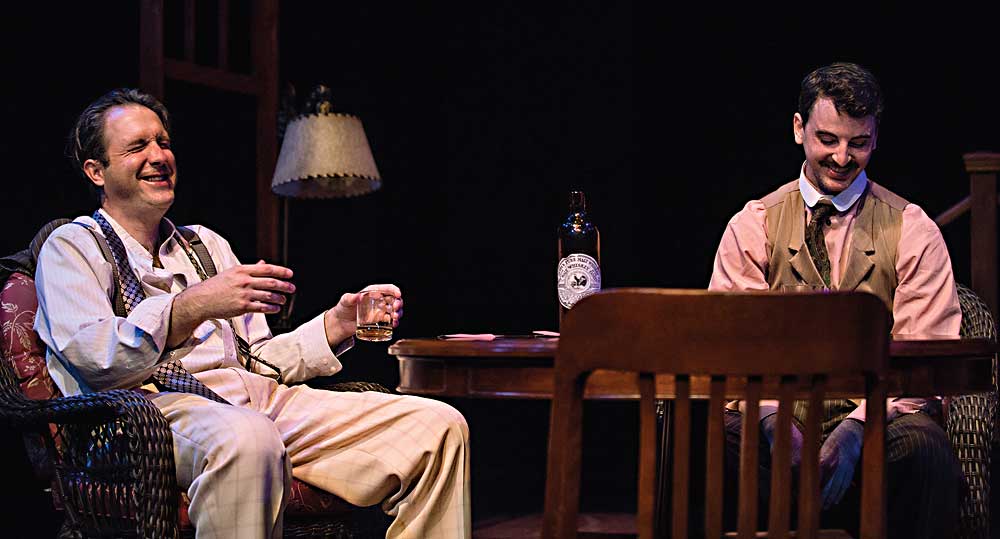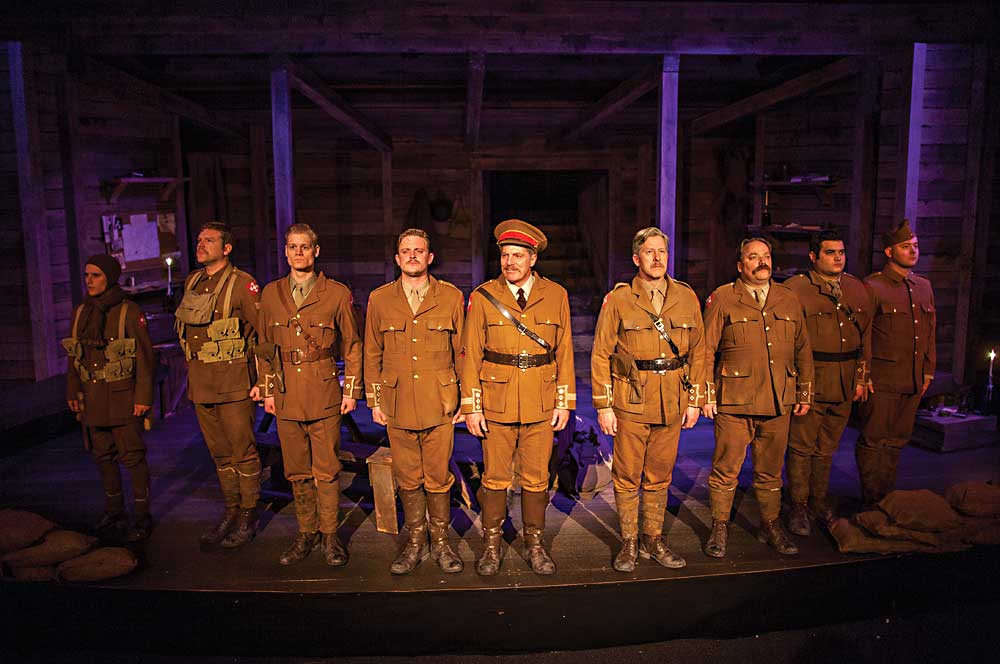Challenge
Arrive at decisions democratically as a functioning artistic collective.
Plan
Organize the company according to a parliamentary model, with transparent communication.
What Worked
Weekly committee meetings and monthly meetings involving the full company.
What Didn’t
Holding cyber meetings results in poor communication.
What’s Next
Providing fulltime employment for the company’s membership.
Kansas City Actors Theatre is currently approaching its 10th season. Since early 2004, the company has been entertaining its local community with critically well-regarded productions of modern dramas ranging from The Cripple of Inishmaan to Dinner with Friends, while functioning as an actor-driven collective that arrives at its decisions democratically. As such, the company has successfully maintained itself as a parliamentary operation, in which every company member has a voice in the organization’s governance. Is this egalitarian set-up a valid model for other companies to follow?
Collectives have a considerable and varied history in American theatre. From the legendary Group Theatre to Chicago’s Steppenwolf Theatre Company, a mission of shared responsibility has been guiding like-minded U.S. companies for nearly 100 years. While each of these collectives can be distinguished according to membership, mission and moment in time, they have faced similar challenges—the promotion of an artistic identity, establishing a presence in a community and the necessity for fiscal solvency. Often it’s been the fiscal challenge that has obliged collectives to dissolve. This occurred with the Group, when in the late 1930s its celebrated actors left the organization for more lucrative hiring opportunities in Hollywood and the commercial theatre. A more recent and broadly emblematic example can be seen in the termination during the 1970s of permanent acting ensembles at America’s regional theatres—the era’s fiscal realities forced theatres to job-in casts on a show-by-show basis.
On this front, not much has changed. In fact, operating a theatre collective today is harder than ever. This stark reality begs the following question: Can a collective achieve artistic and economic success in the contemporary American theatre—and, if so, what is a potential model for accomplishing those goals?
The most inviting answer to these questions would seem to come from Steppenwolf in Chicago, a collective hatched in 1974 by Gary Sinise, Jeff Perry and Terry Kinney. In the years since, the company has produced work on Broadway, originated Pulitzer-winning dramas and served as a theatrical home for a number of brilliant actors. These accomplishments, though, make Steppenwolf a difficult model to emulate—most collectives cannot expect to have SAG, Golden Globe, Pulitzer and Academy Award winners among their ranks, and, furthermore, Steppenwolf has long since outgrown its identity as a theatre dedicated to, and supported solely by, a local community of theatregoers.

A more apt model for the nation’s nascent and practicing theatre collectives—a smaller, quieter, more avidly local organization—is Kansas City Actors Theatre in Missouri. According to company member John Rensenhouse, who is the company’s de-facto managing director, KCAT was “born out of frustration among local artists and community members who wanted to foster the talent pool in Kansas City.” That impulse prompted a model that is “truly collective”—the company has no artistic director, administrative staff or theatrical home. Yet it has continued to produce an annual season of four plays; the creative team consists entirely of Kansas City–based actors, directors and designers.
The company is led by a board of 13, split evenly between artists and members of the community. Together they democratically manage Actors Theatre’s governance, artistic decisions, financial matters and marketing and development—by committee. There are four committees in all, and they meet regularly to discuss subjects relative to their assigned areas. The artistic committee, which consists of the company’s six full-time artists, meets on a weekly basis and is responsible for choosing a season. This arrangement, Rensenhouse says, is “respected and supported by our community [board] members because they recognize that KCAT’s real strength is its artistic integrity.” Founding member Walter Coppage echoes the point, noting that the company’s success comes from its commitment to being an “artist-led collective that brings a roundtable approach to choosing seasons and making artistic decisions.”
The other three committees consist of a balance of KCAT artists and community members, and weekly meetings are held on a rotating basis at committee members’ homes. Administrative and artistic decisions are discussed and voted upon. Once a month, decisions arrived at in caucus are reported to the entire membership and votes are taken on any given initiative. This parliamentary model has remained basically unchanged since the theatre’s founding.
Board membership aside, the local community supports KCAT in other ways. The company operates out of an office at $450 a month, making its overhead particularly low, and it relies on volunteers to assist in generating funds and making inroads with the Kansas City metro area business and educational community. Alliances have been formed with local merchants to conduct sales campaigns, with proceeds going to the theatre. The local community truly values KCAT, as indicated by Tom McKernan, a longtime subscriber who describes the company as “special” and one of the “cultural treasures of the city.” His words are echoed by fellow subscriber Maureen Kennedy, who claims KCAT “adds so much to the arts life of the city” and that the troupe has a unique connection with its audience: “The experience of a KCAT show is personal; I really feel like it is my company and that I know the actors through their work.”
KCAT has shared numerous co-productions with the Theatre Department at the University of Missouri–Kansas City, the latest of which was R.C. Sherriff’s Journey’s End last February. While KCAT was listed as the show’s producer, UMKC provided rehearsal space, personnel for the running crew, an assistant stage manager, the entire design team and four MFA actors as part of the cast.


